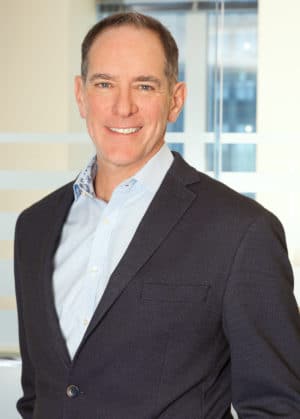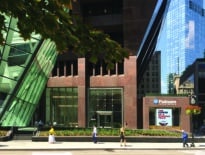Tom Wilder
Title: Principal, Wilder
Age: 57
Industry experience: 25 years
At the site of a 19th-century Army munitions factory – and more recently an enclosed shopping mall that was losing its firepower – Boston-based Wilder is testing new formulas for keeping retail properties relevant. The firm is partnering with Boston-based Boylston Properties on the $400-million redevelopment of Watertown’s Arsenal Mall into a 1-million-square-foot mixed use center including 250,000 square feet of retail, 200,000 square feet of office and lab space, 425 apartments and a 150-room Hampton Inn & Suites by Hilton. Tom Wilder has development and redevelopment experience for over 20 million square feet on the East Coast.
Q: Has your commercial real estate specialty always been retail?
A: We grew up in the mall business and developed malls in Texas and Puerto Rico and Florida and New England. And as I got deeper in you could see the writing on the wall: there were opportunities for more authentic experiences outside the mall. Boston is kind of hitting on all cylinders and we’re all able to take advantage of the ecosystems for growth. In Watertown, it’s the growth in biotech and adjacency to higher education, and to benefit from the companies that spin out of those universities. The thing that’s unique about Watertown is we’re about to create a neighborhood out of what was kind of this obsolete mall.
Q: How did that influence the designs for the Arsenal Yards?
A: The existing building which houses the mall goes away and we bring all of the retailers out to the street and create these beautiful street-front entries. We bring in glass and black steel-framed mullions to accentuate the historical elements that were covered up with sheetrock and tile. It gives the retailers the opportunity to come right out to the street and have their own brand and presence. Now we have a two-sided street. The new building will be opposite, and we’ll have a cool neighborhood street that we’re building. The building that sits on Arsenal Street with the movie theater and Cityworks (Eatery & Pour House) is dramatic. You can see that now: all the glass is going in right now.
Q: Does pure retail development have a future?
A: As we look across the country, there’s a lot of retail space that’s become available as a result of Sears and Sports Authority and Toys “R” Us going away, but we don’t see a need for new development. A lot of these old centers have very good locations. It’s a matter of them needing to be repurposed. We have the opportunity to recreate neighborhoods and bring in fitness and office space and hotels, and that changes the whole dynamic of the property. Arsenal is dramatic in terms of the location and the opportunity.
Q: What percentage of the 250,000-square-foot retail segment is leased?
A: We’re probably close to 90-percent committed. That last 10 to 15 percent is where we’re spending the majority of our time. Everything takes a little bit more time today in retail. That’s what’s going to make it unique.
Q: How do you accomplish that through leasing strategy?
A: There’s this whole movement toward incubation and pop-up space, and we’ve built that into our pro forma to accommodate those kinds of spaces and set aside dollars to invest in those opportunities. They bring in that freshness and a sense of surprise. People still love that sense of discovery. That’s what makes these developments relevant still. With a pop-up, you do a license agreement. It could be a short term: a month or six months.
Q: What’s the best anchor for a retail development today, and do you even need one?
A: The anchors help. Roche Bros. is a fabulous grocery store. We think they’re the perfect fit. It’s really gotten away from these developments focused on the anchor stores. Having that collection of smaller specialty retailers is just as significant and draws that customer from a further distance.
Q: What do you consider the trade area for Arsenal Yards?
A: We’re fortunate in the Cambridge-Boston line that we’re on. We can draw from Allston, Brighton, Brookline and we have ease of access from the great suburbs: Newton, Belmont, Watertown. And we have access off the (Pike and Route 2. We’re spending a lot of time these days on being much smarter with a data and social media approach regarding our customers. There’s a tremendous amount of data available, a lot of it using cell phone data, and they can get details into how far the person is traveling, how long they’re staying at your center, and then they can determine is that an office customer? Is it a fitness customer coming at a certain time of day? That data was’t available until a few years ago.
Five Favorite Escapes:
- Biking to Fern’s in Carlisle with the crew
- Roaming the grounds of the deCordova
- Hiking Franconia Ridge
- Playing blues harp at the Jamspot
- The One & Only with the One & Only







